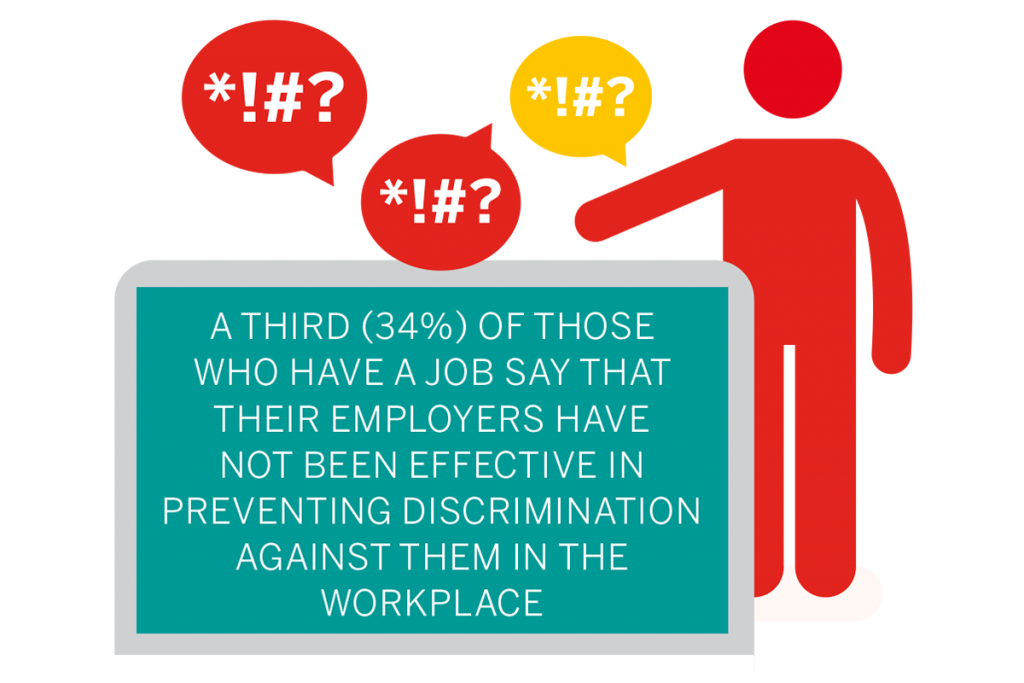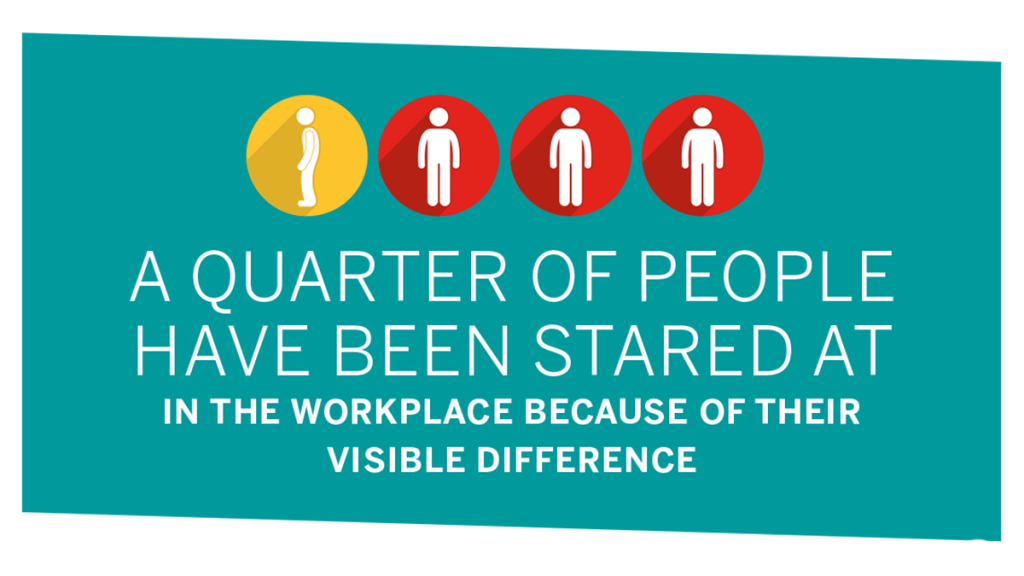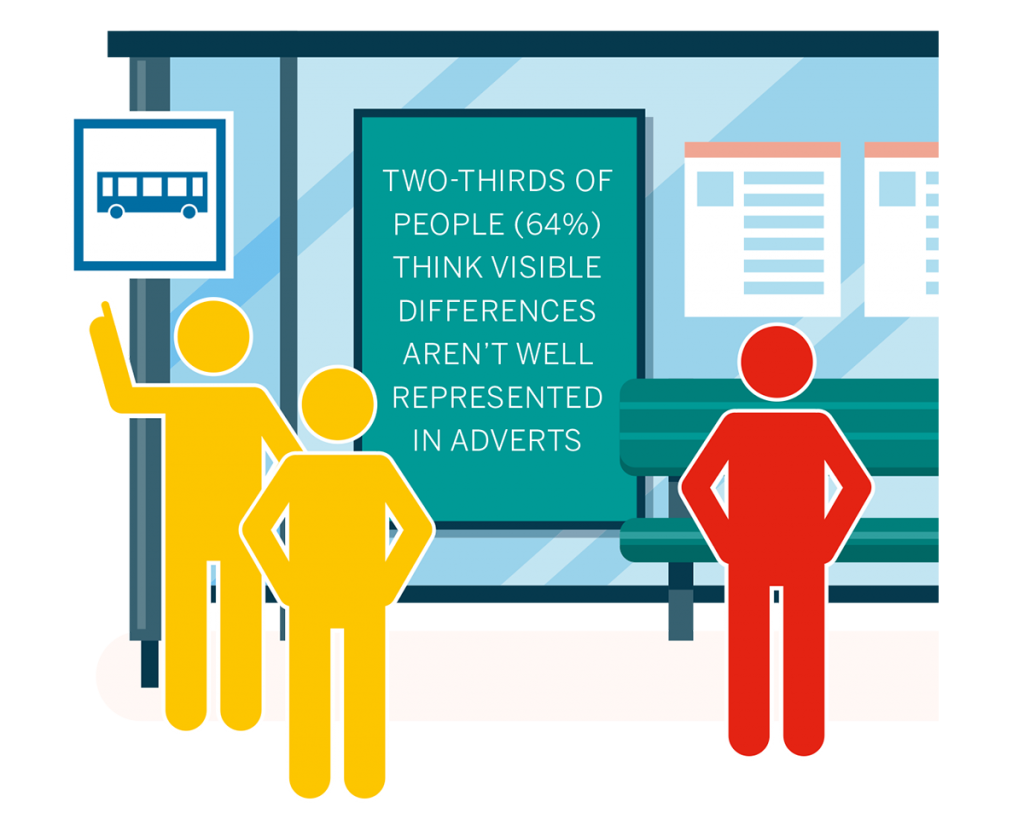Visible difference and unconscious bias training
We discuss how unconscious bias training to help your team create an inclusive workplace for people with visible difference.

Guidance for employers on developing an inclusive environment for people with a visible difference, so everyone benefits from workplace diversity.
People with a visible difference or disfigurement face unique challenges in the workplace. As an employer, you can help develop an inclusive environment that is welcoming to all and where the whole team benefits from diversity in the workplace.
People who have different life experiences bring a huge amount of experience and knowledge to an organisation. With the right workplace culture, they will help your organisation thrive.
Yet one in ten people with a visible difference say they have been ignored by colleagues (10%) and have difficulty making friends at work (12%).
Try a few of these measures to make your organisation a place where talent flourishes and diversity is welcomed.

Diversity in the workplace starts with your recruitment and hiring practices. To learn more about this, visit our page for recruitment managers and HR professionals. This resource gives you hints and tips on how to encourage people with a visible difference to apply for roles and suggestions on overcoming the surprise you may feel on meeting someone with a visible difference.
Everyone you employ and work with – as well as your customers – is different. The best teams are made up of people from a wide variety of backgrounds who come together to solve problems, meet goals and achieve targets. Just as you value your own uniqueness, value the uniqueness of your team members.
Although we may acknowledge that difference is a good thing, we sometimes make assumptions about people because they are not the same as us. One reason we might do this is because of how they look. According to our research:

Treating people differently because of their appearance can take many forms. As managers, we might leave someone off a project they would really enjoy or decide not to give someone with a visible difference a customer-facing role because we assume they won’t want one. Often we are not even aware we are doing this. This is called unconscious bias. Unconscious bias can limit the benefits of diversity in the workplace and make people feel left out or discriminated against.
Training is recommended for every workplace to help you and your staff become aware of the way unconscious bias works so you can stop it from happening. You could arrange an unconscious bias workshop or training session. To help you get started, view our unconscious bias page.
Some employees with a visible difference may feel marginalised and take the back seat in meetings and on projects. Managers should work to identify hesitant contributors and find ways to encourage them to contribute. Think about meetings and ask, “Who is invited? Who gets to speak and how often? Am I leaving out anyone whose input would be valuable?”
Remember that you chose your employees for their talent, skills and knowledge. Create an environment where those attributes can flourish so everyone can benefit from diversity in the workplace. To do this, look for opportunities where you can enable employees to work to the best of their ability.
Employers should not judge your capability for a job based on your looks. And, if anything, diversity should be celebrated more in the workplace, as we can all bring our backgrounds and unique qualities to create a strong team.
Being the centre of attention can be difficult for people who look different. Instead of putting people on the spot, a more inclusive approach could be to invite people to submit written contributions in advance, then acknowledging this input during the meeting.
Does your organisation insist that everyone has their camera on? This can be challenging for people with visible difference. Instead, encourage people to turn their camera on or off when it suits them. We would all prefer to have the camera off at times and other participants should be supportive of this policy.
An honest review of your own leadership habits can throw up things you want to change and things you need to do more often. Ask questions such as:
As you find areas of improvement, make it your mission to change. By leading by example, you can change the culture of your organisation.

We discuss how unconscious bias training to help your team create an inclusive workplace for people with visible difference.
We discuss what you can do to recruit fairly and how to avoid discriminating against any applicant with a visible difference.